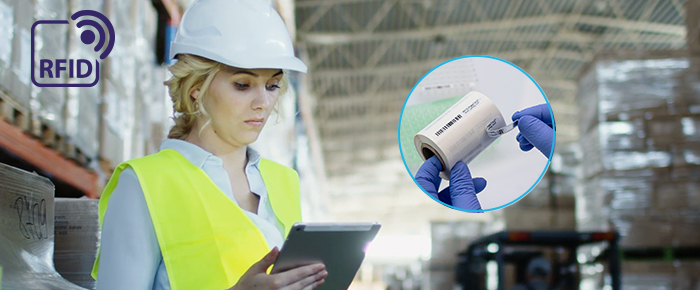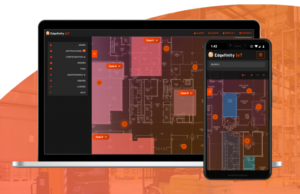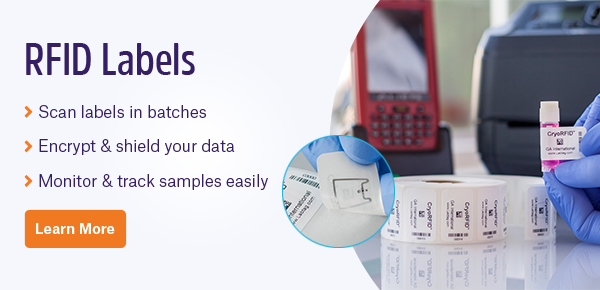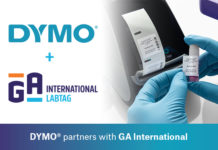
Radio-frequency identification (RFID) has already become a key part of many inventory management systems used to keep track of a variety of items. This includes the healthcare field, where RFID can improve the tracking of patients, medicines, and medical assets in hospitals, improving efficiency and safety by digitizing these processes. However, to fully take advantage of all the features and benefits RFID technology offers, a robust RFID software must also be in place to help collect and analyze all the incoming data. RFID technology is already currently in use by many industries, including logistics, manufacturing, retail, and shipping.
Benefits of Using Dedicated RFID Software
RFID labels offer a number of benefits over other tracking systems, most notably their ability to be scanned in batches and without the need for direct-line-of-sight. However, to fully take advantage of these features, the use of fixed RFID scanners is recommended. These scanners will send and receive data from the RFID tags at regular intervals, providing a real-time picture of your inventory. This can reduce the cost of inspections, lessen the need for shipping returns, as well as improve staff productivity and accuracy.
The increase in incoming data will, however, require software to collect the data and help make sense of it. Cobbled together software solutions may work in the short term, but they can become costly to maintain and will often not integrate well with your enterprise resource planning (ERP) or warehouse management system (WMS).
This is where a dedicated RFID software solution can help. It can be tailored to your exact needs to provide the information you require promptly. This will allow you to use RFID tracking to find assets or equipment in real-time while also monitoring the usage of valuable equipment. Alerts can also be set up to remind users what equipment needs to be calibrated or replaced. High-value items can be rapidly identified and located, with alerts indicating when specific reusable items may be running low so that they can be reordered. In addition, you can track items as they move through the manufacturing process. This can help identify bottlenecks and improve efficiency.
RFID tracking can also be used to enhance the safety and security of your facility. RFID technology is already widely used to control access to sensitive areas. However, by combining active RFID hardware and software with a real-time location system, this RFID tracking system can also be used to safely monitor staff, even in lone worker situations. The RFID software can be programmed to send alerts to coworkers as well as first responders when an incident occurs. This helps keep staff safe and ensures help arrives faster in case of emergencies.
What Features Should the RFID Software Offer?
When deciding on what RFID software to employ, there are a few features that you should look out for to ensure efficient inventory tracking. Partnering with a reliable software provider will help you identify your specific requirement and is key to ensuring a smooth implementation process. Your software should provide a complete and real-time look at any site or location, allow you to set up rules and permissions for various variables, such as time, temperature, and movement, and allow for easy searching of your inventory, so you can track and search for items quickly, finding their exact location on your facility’s maps. Whether you need to track large amounts of inventory, locate misplaced equipment, or ensure the safety of your employees, the RFID tracking system should deliver all the necessary data in an easy-to-access interface and in real-time. In addition, the software must not only be able to address your current needs but also have the flexibility and scalability to grow with you. Here are some factors you should consider.
- Web-based design: A web-based application will ensure you don’t need to be at the office or your work computer to get inventory status updates. This means you and other staff members can get important updates and alerts to your phone or tablet. This ensures that when an incident does occur, according to the criteria you’ve selected, you can take quick action to respond.
- Customizable: The RFID tracking system must also be fully and easily customizable to meet your exact needs. You should be able to create rules, both complex and straightforward, to detect any variations in protocol or safety violations. No two facilities are alike, and tailoring the system to your specific needs will generate much better results and provide more useful data.
- Intuitive reporting: Inventory levels should be recorded regularly, while every triggered alert should be noted as it happens, with how it was handled and resolved. This allows staff to identify trends and plan future responses to critical situations. Report templates are also a convenient tool for generating custom reports on a combination of different parameters.
- Scalable: Regardless of what RFID software you chose, it should be fully scalable in order to grow with you. RFID technology is continuing to grow and evolve and is being used in increasingly new and innovative ways. Your software should adapt to these new tracking paradigms and help you implement them as needed.

RFID in Healthcare
The aim of most RFID software implemented in the healthcare field is to minimize errors1. This can be accomplished by identifying patients with an RFID wristband that can be tracked in real-time, using RFID tags to track drugs and medication, reducing the risk of administering the wrong treatment, and optimizing resource inventory tracking, allowing doctors and nurses to know their up-to-date supply levels.
To achieve this, RFID software architecture must store and manage the readings from the RFID labels within its coverage area and easily display this data to end-users. Ideally, the connectivity between the various hardware (readers, devices, and servers) should be adapted to the existing infrastructure of the medical facility1. Most hospitals will also provide mobile devices, such as tablets, to their staff that will give them access to access to this real-time information about patients, supplies, and equipment. As such, mobile applications that make visualizing this data more accessible while also allowing staff to add their input have been developed and implemented already in various facilities.
Some examples of the application of RFID technology in healthcare include a medication administration system that automatically verifies medication prior to generating the corresponding prescription, thereby eliminating the risk of paper-based errors1. This system was able to reduce the number of reported errors following its deployment significantly. Another facility implemented a management and tracking system used to improve their management of medical assets1. This resulted in faster response times, as the staff spent less time searching for medical devices in their inventory.
LabTAG by GA International is a leading manufacturer of high-performance specialty labels and a supplier of identification solutions used in research and medical labs as well as healthcare institutions.
References:
- RFID Technology for Management and Tracking: e-Health Applications. Álvarez López Y, Franssen J, Álvarez Narciandi G, Pagnozzi J, González-Pinto Arrillaga I, Las-Heras Andrés F. Sensors (Basel). 2018 Aug 13;18(8):2663



